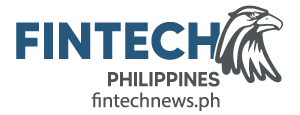
Fintech a Core Element of the “Iron Triangle” Fueling Philippines’ Startup Growth
by Fintech News Philippines November 29, 2023In the Philippines, fintech, e-commerce and logistics are prominent sectors in the entrepreneurial landscape. These industries, referred at as the “iron triangle”, have been instrumental in innovation and are now fueling growth in emerging areas such as entertainment, healthtech and gaming, a new report by Philippines-based venture cpaital (VC) firm Gobi-Core Philippine Fund says.
The report, titled the Philippine Startup Ecosystem Report: Founders Edition 2023 and co-presented by Alibaba Global Initiatives, provides a look at the country’s growing entrepreneurial landscape and startup scene, highlighting the “iron triangle” sectors at the core of this ecosystem.
These sectors, according to the report, are pillars of innovation and are paving way for other rising industries, signaling diversification and dynamism in the Filipino startup landscape.

The Philippines’ startup ecosystem Iron Triangle, Source: Philippine Startup Ecosystem Report: Founders Edition 2023, Nov 2023
In the Philippines, developments in the fintech sector have played a crucial role in nurturing the rise of other tech industries. This is achieved through the introduction of new financing options for startups, the facilitation of smooth online transactions, the support of online business expansion, and the simplification of cross-border transactions.
The fintech sector, which now boasts a total of 285 companies, is predominantly influenced by payment firms and payment innovation, the report says. This segment has experienced remarkable growth, attributed to the popularity of mobile wallet services like GCash and PayMaya, government initiatives such as the National Retail Payment System (NRPS), and the expanding e-commerce landscape.
In 2013, digital payments accounted for a mere 1% of total payments by volume, data from the Gobi-Core Philippine Fund report show. By 2020, the country had surpassed its original target of 20%, and by 2021, that share rose to an impressive 30.3% of total payment volume.
Usage of digital payments continued to rise in the years that followed, reaching 42.1% of retail payments in 2022, up 11.8 points from 2021. The figures put the Philippines well on track to achieve its goal of 50% payments being digital by 2023, Bangko Sentral ng Pilipinas (BSP) Deputy Governor Mamerto Tangonan said during an event in October.
He also highlighted the “explosive” growth of e-money accounts, which, since 2021, have outnumbered traditional bank accounts at about 27.5 million users two years ago. In 2019, only 8% of Filipinos held e-money accounts, a share that ballooned to 36% in 2021, he said, adding that e-money accounts are now the most widespread financial choice.

The rise of digital payments in the Philippines, Source: Philippine Startup Ecosystem Report: Founders Edition 2023, Gobi-Core Philippine Fund, Nov 2023
E-commerce, the second pillar of innovation outlined in the report, is another tech sector that’s witnessed tremendous growth. This sector has ballooned on the back of a combination of favorable factors, including an expanding middle class with increased disposable income, growing accessibility of the Internet across the country and the availability of secure and convenient digital payment solutions.
In 2019, gross merchandise value (GMV) of the e-commerce industry stood at just US$3 billion, a sum that surged to US$14 billion in 2022 and which is expected to grow to US$16 billion this year, according to the report. By 2025, total e-commerce sales are set to soar to soar to US$24 billion.

The Philippines’ e-commerce industry, Source: Philippine Startup Ecosystem Report: Founders Edition 2023, Gobi-Core Philippine Fund, Nov 2023
The Philippines currently has the third largest e-commerce market by value in Southeast Asia, behind only Malaysia and Indonesia. That market is now valued at US$18.16 billion, ahead of Singapore (US$17 billion), Thailand (US$12.8 billion) and Vietnam (US$12.01 billion), the report shows.

E-commerce market value in ASEAN’s six biggest markets, Source: Philippine Startup Ecosystem Report: Founders Edition 2023, Gobi-Core Philippine Fund, Nov 2023
Finally, the logistics sector is another crucial component of the Philippines’ economy. The sector has been pivotal for the success of startups across various industries, especially for those engaged in e-commerce and retail. For these startups, logistics directly impacts the customer experience by ensuring on-time delivery, which is essential for building customer satisfaction and loyalty.
The logistics sector also facilitates market access and expansion for startups, allowing them to reach new markets while fostering business growth and scalability. This expansion is particularly crucial for startups looking to diversify and capture a broader customer base.
Currently, the Philippines’ logistics sector contributes 4-6% to the country’s gross domestic product (GDP), according to Gobi-Core Philippine Fund. By 2033, the freight and logistics market is expected to reach US$36.15 billion, growing at an annual rate of 7.33%.
The Philippines’ fintech sector has been expanding at an unprecedented rate, propelled by efforts from both governmental and private entities, as well as booming usage of digital financial services by unbanked and underbanked segments.
New initiatives launched by the government over the past year or so are expected to further encourage the growth of the sector. These initiatives include the launch of PESONet Multiple Batch Settlement transfers and the Interoperable Bills Pay Facility, as well as the initiation of the Open Finance PH Pilot.
Most recently, BSP Governor Eli Remolona Jr. revealed that the central bank was contemplating lifting the three-year moratorium on digital bank licenses, telling reporters that many groups, both foreign and local, had expressed interest in obtaining a license to operate digital banks.
The Philippines currently has six licensed digital banks. Maya Bank stands as the biggest player in terms of assets with PHP 23.22 billion (US$418.8 million), as of the end of March 2023, followed by UnionDigital Bank with PHP 15.16 billion (US$273 million), Tonik Digital Bank with PHP 10.71 billion (US$193 million), OF Digital Bank with PHP 4.5 billion (US$81 million), UNObank with PHP 3.05 billion (US$55 million) and Gotyme with PHP 2.74 billion (US$49 million), according to a report by Philippine Star.








